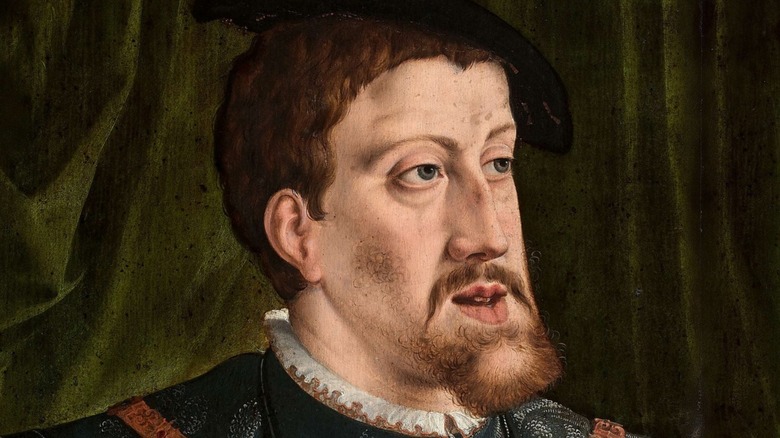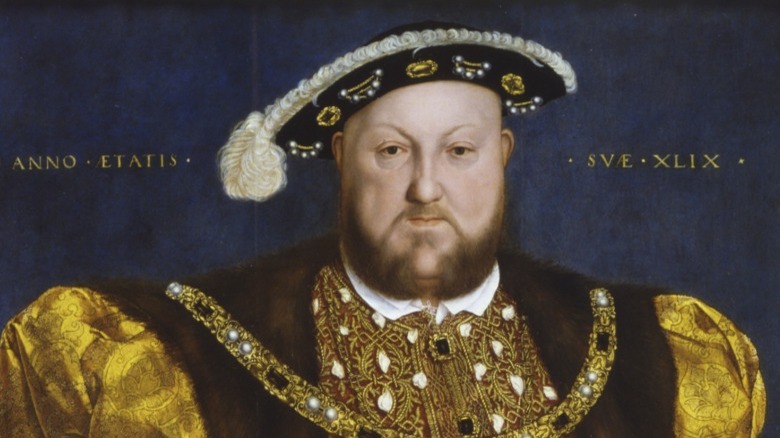The 500-Year-Old Letter Written In Code By Charles V Cracked By French Scientists
Average dinner party conversation doesn't usually include ancient royal letters or undecipherable codes, but for cryptographer Cecile Pierrot, it did. At a dinner party in Nancy, France, in 2019, she heard about a letter, supposedly located in the city, written partially in code by Holy Roman Emperor Charles V (via BBC). Intrigued, she went looking and eventually found the letter in the basement of Nancy's Stanislas Library, according to Business Insider.
Charles V was once the King of Spain and ruled a vast territory including much of Central Europe, southern Italy, the Netherlands, and some American colonies. He wrote the letter to his ambassador to France, Jean de Saint-Mauris, in February 1547. At the time, religious tensions were high in Europe, according to the BBC.
Parts of the secretly coded letter were written in French, not code, but the letter included around 120 mysterious symbols. Pierrot initially put the symbols into the Python programming system for decoding, but without success (via Business Insider).
Cracking the code
Pierrot teamed up with fellow cryptographers Paul Zimmermann and Pierrick Gaudry, plus historian Camille Desenclos, and they worked on the letter for months before they finally deciphered it (via Business Insider). This involved creating a more advanced algorithm to look for patterns and possible symbol meanings, according to Live Science. Even this system didn't decipher the entire letter. They were able to completely decode it based on some of Charles V's other coded letters, one of which included a transcription by the recipient.
They discovered that whereas some symbols directly replaced letters, others represented entire words or people. For example, King Henry VIII of England was represented by a needle symbol, and King François I of France by a dash with a dot under it (via BBC). Words coded letter-by-letter didn't include symbols for vowels — they were represented by diacritical, or accent, marks. E wasn't represented at all; this was probably intentional, to make the letter even harder to decode if intercepted. Per the BBC, Desenclos said the parts written in French probably contained things Charles actually wanted the French to know if they ended up reading it.
The letter's contents
The letter revealed Charles V's foreign policy concerns at the time. His kingdoms were currently at peace with France, but relations weren't perfect. The countries had longstanding conflicts. He wrote to Saint-Mauris that he was afraid the recent death of King Henry VIII (pictured) — an ally to France — would shake up French politics, with potentially disastrous results (via Live Science). He wanted Saint-Mauris to maintain the peace. Charles himself had other problems to handle.
In some of his territories, German Lutheran princes had formed the Schmalkaldic league to oppose the rule of the Catholic Holy Roman Empire, according to Live Science. In 1547, they were rebelling. They had even chased Charles' relative, Ferdinand of Tyrol, out of Prague. In code, Charles told Saint-Mauris to mislead the French a bit, to say the rebellion was unimportant and Ferdinand had left of his own accord (via BBC).
At the time, Charles also feared French politicians might be plotting to assassinate him, with help from Italian mercenaries. He asked Saint-Mauris to find out if it was true. The cryptography team says it probably wasn't, as this is the only extant reference to the plot. Historian Desenclos described the decoding project as a "rare" opportunity, per Live Science. The team plans to release a full translation of the letter in an academic paper (via BBC).


